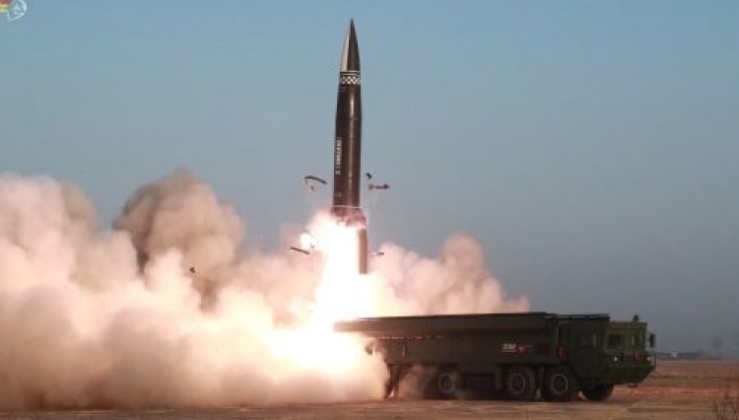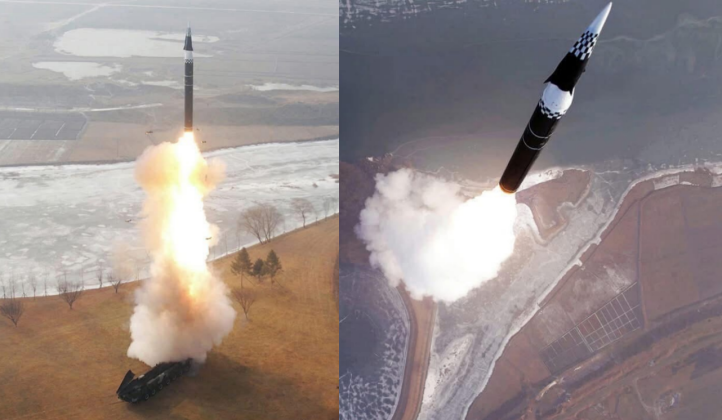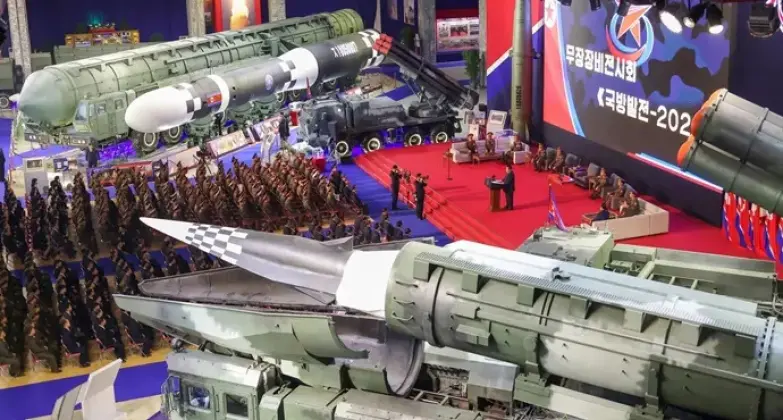News
North Korea Unveils Successor to Iskander-Type Tactical Missiles with Hypersonic Glide Vehicle to Bypass Air Defences
North Korea has unveiled a successor to its KN-23 series of tactical ballistic missile systems at the Defence Development-2025 exhibition in Pyongyang, during which multiple new weapons systems have been seen for the first time. The new short ranged tactical ballistic missile system uses a lift-generating hypersonic glide body and small control surfaces, and appears to be the system of its kind ever to integrate a hypersonic glide vehicle. Designated the Hwasong-11Ma, the new system appears to use the same transporter-erector-launcher as the KN-23 and same lower section, while the upper section with a glide vehicle appears intended to separate near the top of the boost phase. It is the latest of multiple new missiles that integrate hypersonic glide vehicles, following the Hwasong-11 medium range ballistic missile first flight tested in September 2021, and the Hwasong-16B flight tested from March 2024.

The KN-23 was first unveiled in February 2018, and closely resembled the Russian Iskander-M tactical ballistic missile system with many common features. Both systems use solid fuel engines, emphasise high levels of mobility, and launch missiles on quasi-ballistic semi-depressed trajectories with high levels of manoeuvrability to better evade advanced air defence systems. Such missiles have proven to be highly effective against NATO’s most capable long range air defence system intended to counter such attacks, the MIM-104 Patriot, during combat testing in the Ukrainian theatre. The KN-23 has a number of significant advantages over its Russian counterparts, including a much greater variety of launch vehicles, a longer range, and the existence of a larger variant, the KN-23B, with a warhead several times as large and a grater range advantage.

Commenting on the new armaments unveiled at the defence exhibition, Chairman of the ruling Korean Workers’ Party Kim Jong Un observed: “As the U.S. military buildup in the south Korean region intensifies, our strategic interest in the area has also increased. Therefore, we have allocated our special assets to key targets of interest accordingly.” “Can the south Korean territory ever be considered a safe place? That is for them to judge,” he added. While the majority of missile types unveiled were designed to strike targets far beyond Korea, from U.S. bases in Japan to Guam, Hawaii, and the American mainland, as a short ranged tactical system the Hwasong-11Ma was designed to strike targets on the Korean Peninsula. The missile system’s service entry is expected to further widen the gap between North Korea and both Russia and South Korea in their tactical ballistic missile capabilities, with neither of the country’s two neighbours having developed a comparable system.

Hypersonic glide vehicles like that seen on the Hwasong-11Ma are significantly more efficient in achieving greater ranges with a limited fuel load despite their far higher speeds and their flight through denser air. Such vehicles can pitch to shallow angles, reducing the radar horizon and reaction time for hostile air defences, all while manoeuvring laterally to engage from unexpected angles which makes them extremely difficult to intercept. When considering the immense difficultiesthe Patriot system has faced countering much less sophisticated quasi-ballistic missile attacks, against which interception rates have fallen to around six percent, the potency of the Hwasong-11Ma is expected to be highly significant. With North Korea having emerged as a key supplier of ballistic missiles and a wide range of other military equipment to Russia, the possibility of the Hwasong-11Ma also being fielded by the Russian Armed Forces, and seeing its first combat tests in the Ukrainain theatre, remains significant.












